Are you looking into ways of making your coffee? Heard a lot about the French Press, but not entirely sure if it’s for you? In this article, I will be going over how to use a French press, along with giving you so more insight on where and how this classic brewing device came about.

What Is A French Press Coffee Maker?
The French press is a classic coffee brewing device, known as a French press or a coffee press in North America.
- Britain and Ireland, its referred to as a cafetière.
- South Africa, Australia and New Zealand it’s called a coffee plunger.
- Italy, a caffettiera a stantuffo.
- Germany, they would call it a Stempelkanne
- France, they would refer to it as cafetière à piston or cafetière.
While others refer to it as it’s famous trademark “Bodum”
History Of The French Press

The first design of the French press was created and patented in 1852 by two French inventors known as Mayer and Delforge. The inventors weren’t able to create a seal within the carafe, which made the design quite different from the press we know today. The design was later revised by two Italian designers known as Attilio Calimani and Giulio Moneta in the year 1929, improving the filtration system and adding a flexible helical spring or rubber packing around the edge of the filter.
In 1958, the design was improved by a Swiss man known as Faliero Bondanini. Bondanini would replace the previous filtration system with flexible metal fins that would push toward the sides of the pot. The design would be manufactured in a French clarinet factory known as Martin S.A, and sold under the brand name “Melior” and model name “Chambord”. The Chambord was getting extremely popular in France and that’s when Bodum joined forces with Martin S.A in 1970 to help with distribution. Bodum eventually bought out Martin S.A in 1991.
How Does The French Press Work?
Now, the modern French press consists of a cylindrical beaker that’s usually made out of glass, metal or ceramic. The beaker is usually encased in a base with a handle, so you don’t burn yourself. The press is topped off with a metal or plastic lid that has a plunger with a filter that fits perfectly into the cylinder. These filters can range depending on the quality of the press. To maintain great tasting coffee, you must disassemble the press and clean it thoroughly. It’s recommended to do this at least once a week.
Below is the anatomy of the French press so you can get a visual idea.

Types of Presses
Depending on your brewing needs, there are various types of French press coffee makers to choose from. A standard French press usually brews and holds around 6-8 cups of coffee. Mind you, these “cups” are not your usual mug size, with each cup being counted as 4oz.
Some of the varieties in the French press are:
Small Press: Can brew up to 3 to 4 cups of coffee and are very easy to clean and are great for travelling.
Large Press: Can brew up to 8 to 12 cups of coffee, they are great for the office and large gatherings.
Ceramic/Metal Press: These presses can retain heat for longer. The metal presses are much more durable than the glass presses.

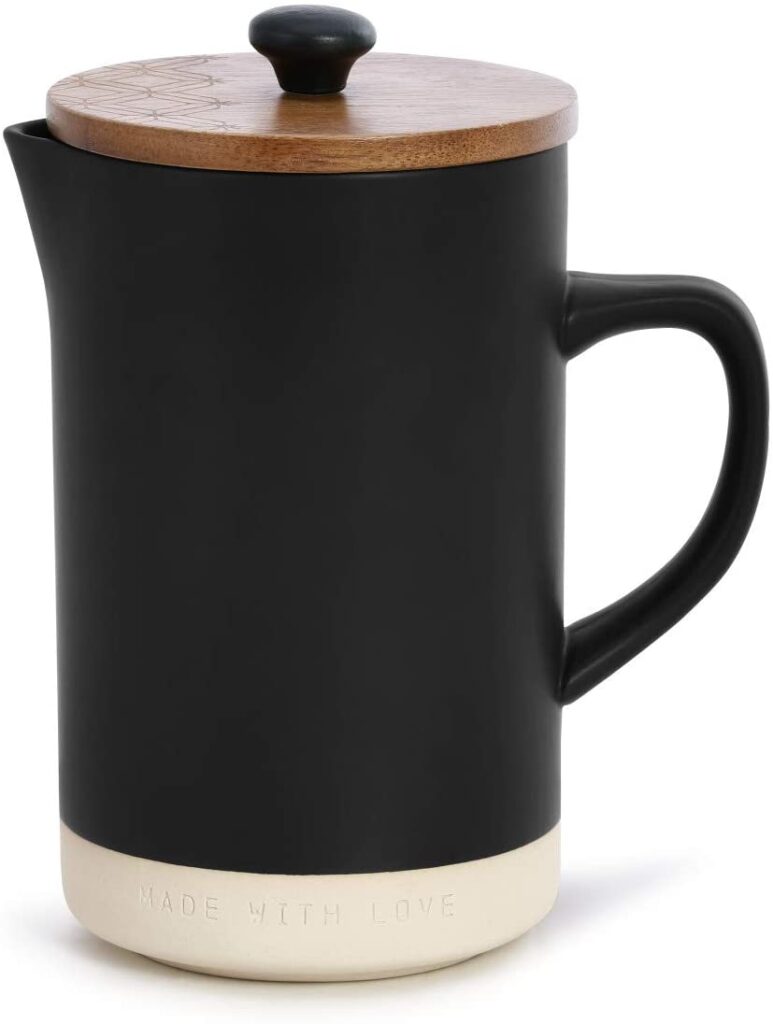
Electric Press: These presses are automatized. Similar to a drip coffee machine, they heat the water, brew the coffee, and keep the coffee warm.

How To Use A French Press
There are a few known methods on how to use a French press. I will be going over an easy process that anyone can do, with minimal equipment.
First, let’s go over some tips to keep in mind before we start.
Choose the Right Press
Investing in a quality French press is essential if you want to be able to brew great-tasting coffee. Depending on your brewing needs, choose one that is right for you, whether you want to go for a classic glass beaker or a metal one the choice is yours, but whatever you do… don’t cheap out on it. Be sure to check out our guide on the best french press coffee makers!
Buy Quality Coffee
Whether you buy your coffee online or from a local roaster, there are so many great coffee roasters out there. Experiment with various beans from various countries. Flavors vary from region to region. You never know you might just come across your favorite coffee profile!
Grind
When buying your coffee, I highly recommend buying whole beans and grinding yourself for optimal freshness. Grinding your coffee right before you brew it will deliver the best-tasting coffee. I recommend using a Burr coffee grinding, it will deliver the most consistent grind. For French Press, you want a medium-coarse grind.
Water
The quality and temperature of your water play an important part in brewing that perfect cup of coffee. You want to make sure you are using filtered water for your brew and that the water temperature is between 195F-205F(90C-96C). Now, if you don’t have water thermometer on your kettle, it’s best if you catch the kettle right before it begins to boil. You can also let your kettle rest for a minute after it boils to reach the ideal temperature.
Clean Up
It’s important to give your press a proper clean after each use, so you can get rid of any previous coffee oils and residue. Dirty presses can dramatically affect the taste of your brew.
The French Press Calculator
| FRENCH PRESS SIZE | WATER |
| 3 CUPS | 12 OZ – 340 ML |
| 4 CUPS | 17 OZ – 440 ML |
| 6 CUPS | 24 OZ – 680 ML |
| 8 CUPS | 34 OZ – 960 ML |
| 12 CUPS | 51 OZ – 1500ML |
When brewing coffee with the French Press, it takes a bit of playing around to get the perfect taste. Since there are many attributes to consider like the type of coffee bean and type of roast it takes a bit of practice to find the perfect ratio for each coffee type. Using the Chart above and the calculator below you can calculate the proper coffee to water ratio.
Below you will see a red number under “How much coffee do you want to brew in fluid ounces?” Click the number and input the amount of coffee that you are looking to brew.
Then, just below “How strong do you want your coffee?” Click the number and adjust how strong you want your coffee.
- 1 – Strong (Bold, Bitter, Thick Bodied)
- 3.5 – Medium (Medium Body)
- 7 – Weak (Light Bodied)
After inputting these details, you will be giving the appropriate ratios for your brew.
Brewing Steps
STEP 1: Fill your kettle with filtered water and bring it to just off a boil.
STEP 2: While you heat your water prepare you ground coffee. If you’re grinding your beans, aim for 5-10g per cup of coffee and use a medium-coarse grind. When measuring your ground coffee, you can use the “Golden Ratio. The “Golden Ratio” is 3 tablespoons of ground coffee for every 6-8oz (a cup) of water. You can also use the coffee to water ratio which is 1:15. This ratio means 1 part coffee for 15 parts of water. If you have a scale, you can weigh out your parts for an accurate calculation.
STEP 3: Remove the lid and plunger from your press, now before you proceed to add your coffee into the beaker, pour a bit of your heated water into the beaker and swish it around to warm up the press. Discard the water into the sink, and add the coffee into the press.
STEP 4: Pour your heated water 195F-205F(90C-96C) over the coffee grounds, just enough to cover them. Let the coffee bloom for about half a minute. This process will allow for carbon dioxide to escape the coffee and remove any sour taste and help with the extraction. At this point, the coffee will start to bubble if your coffee is fresh.
STEP 5: Once the half-minute is up, continue pouring the rest of the measured water and set your timer for 4 minutes. DO NOT STIR THE GROUNDS.
STEP 6: At about 3 minutes, stir the coffee’s surface gently and put the lid and plunger onto the beaker and carefully lower the plunger down so it can sit just above the coffee’s surface. This will trap the remainder of the heat and help with the brew for the remaining minute.
STEP 7: Now that the 4 minutes is up, slowly press the plunger down to trap the remainder of the coffee grounds.
STEP 8: Pour out your coffee and enjoy! Remember, that any remaining coffee will continue to extract, so if you have any leftover, decant it.
STEP 9: Clean your French Press.
How To Clean A French Press
A clean French press will always produce a great tasting brew. So it’s very important that after each brew you give the device a thorough cleaning to remove any old coffee grains, oils and residue left behind from the last brew.
Some people recommend doing a deep scrub every week, while others do it after each use. This decision is up to you. Disassembling the filter and giving it a nice scrub in between each brew will assure you that your next batch of coffee will be tasting its best.
Luckily, the design of a French press is very simple and disassembling it is extremely easy and doesn’t require much time. Some presses are even dishwasher friendly.
Here are some tips on how to clean your French press:
- Fill the French press with warm water to loosen any coffee grounds at the bottom of the beaker. This is best done right after use.
- Use a strainer to save the leftover grounds for other purposes, or dispose of them into the trash.
- When rinsing your press, fill the beaker with soap and water and put the lid back on. Pump the plunger a couple of times to remove stubborn coffee residue and oils. Repeat if needed.
- When disassembling your filter, lay it out to dry before you re-assemble. So it can properly dry out.
The Verdict
The French Press is an excellent coffee brewing system that delivers great-tasting robust coffee, while it may take some time to master the coffee and water ratios, and finding the right equation. It will all come in time. Experimentation is key.
IF YOU’VE ENJOYED THIS ARTICLE, GIVE IT A PIN!

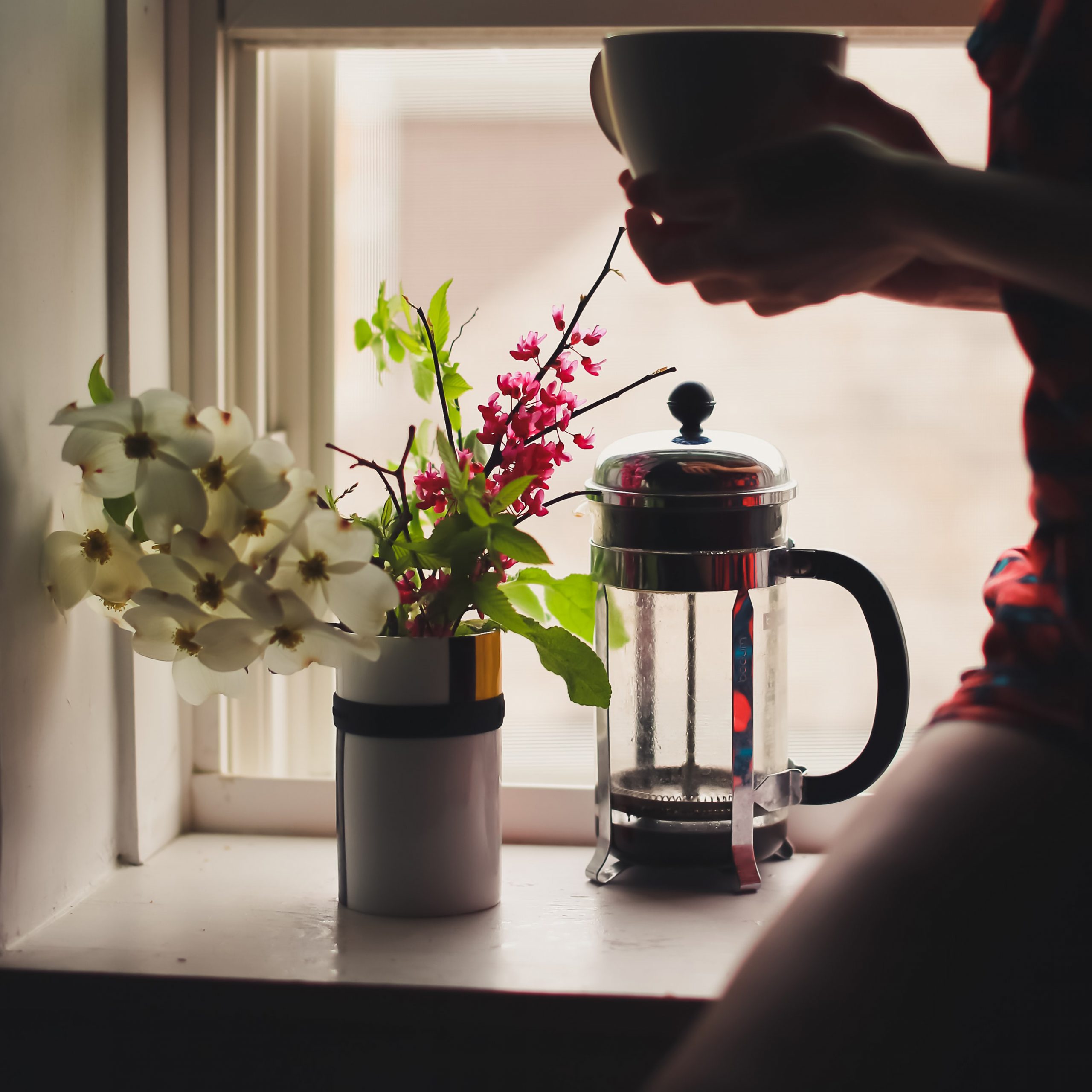





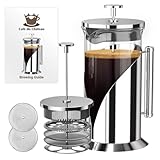













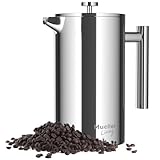





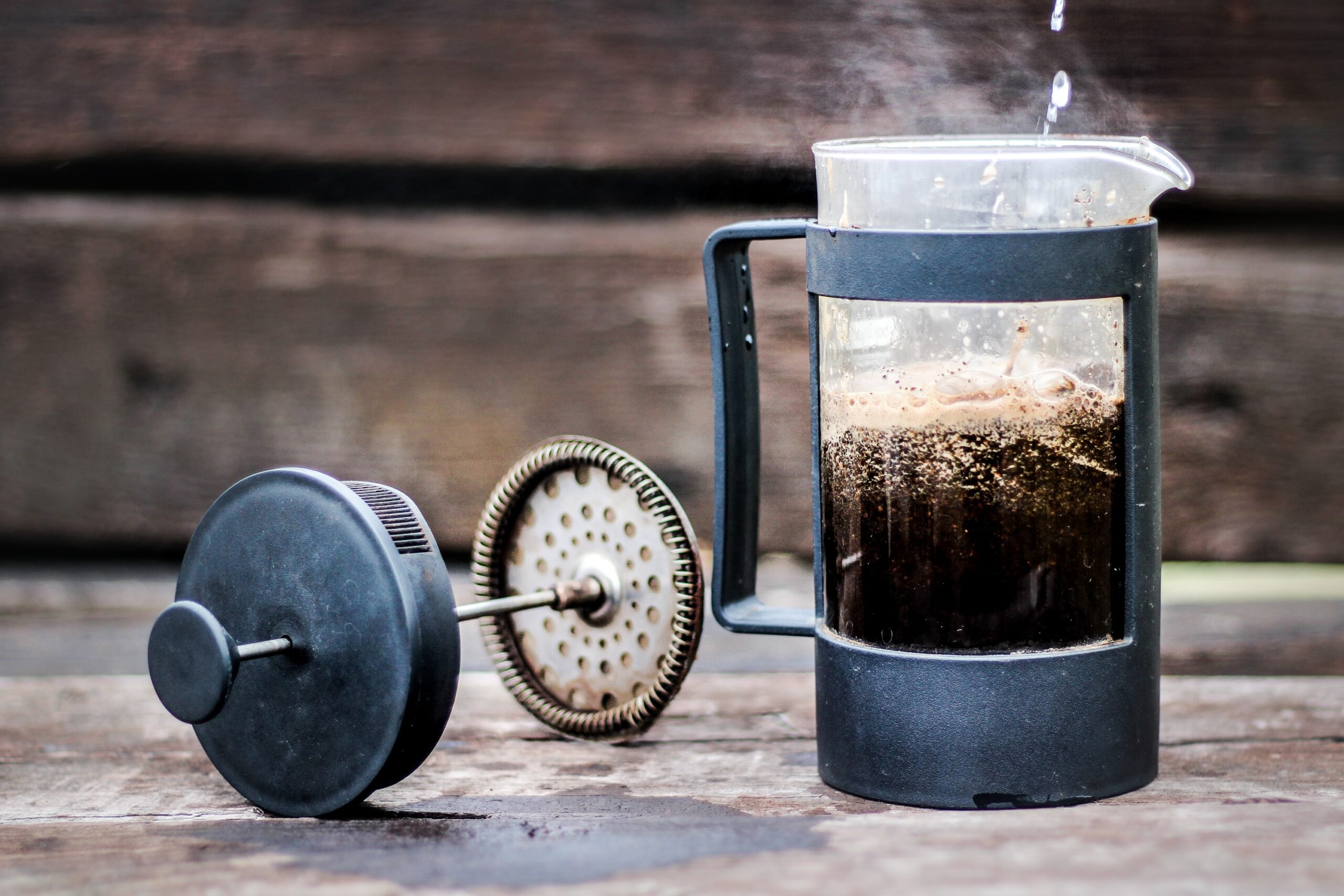

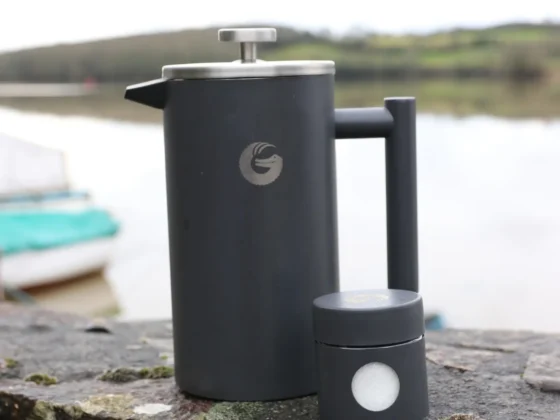

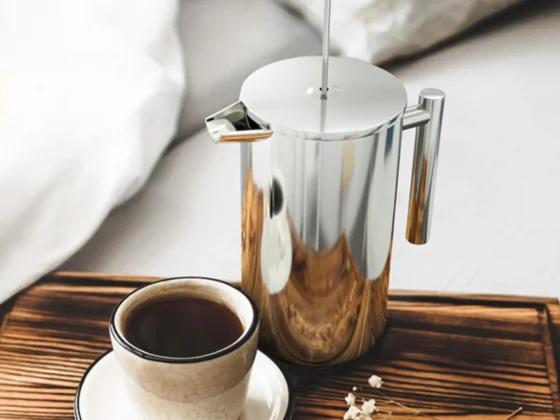
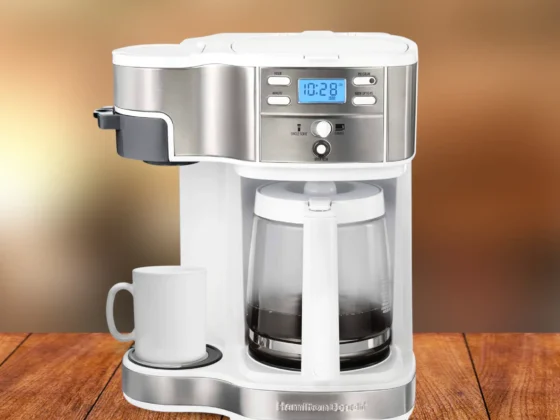
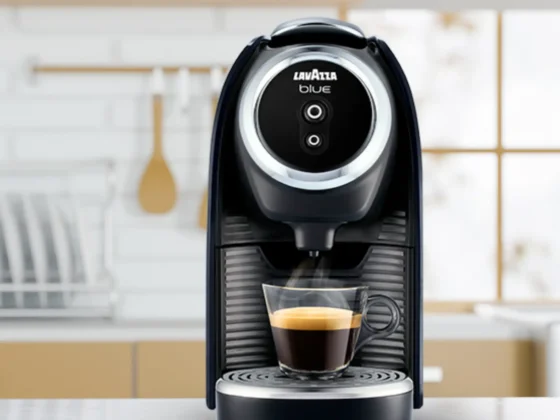


1 comment